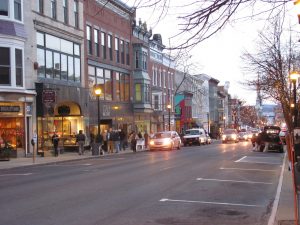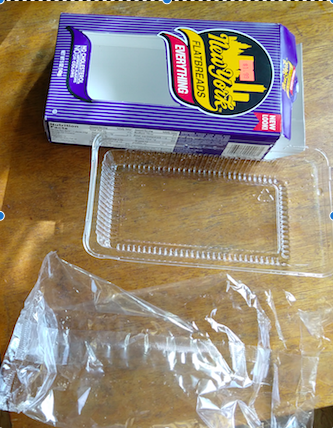I just experienced such a screwed-up customer service encounter that I have to share it.
 In August, I received a letter from my primary care doctor announcing that he was cutting back on his patient hours. He has been my doctor since about 2003. In November, as COVID seemed to be easing, I called to schedule a physical exam for the first time in several years. I explained that I had several concerns and I really trusted my doctor’s diagnostic ability and asked if it was possible, despite his scaling back, to schedule with him. And I was given an appointment for today at 2:40 p.m.
In August, I received a letter from my primary care doctor announcing that he was cutting back on his patient hours. He has been my doctor since about 2003. In November, as COVID seemed to be easing, I called to schedule a physical exam for the first time in several years. I explained that I had several concerns and I really trusted my doctor’s diagnostic ability and asked if it was possible, despite his scaling back, to schedule with him. And I was given an appointment for today at 2:40 p.m.
Yesterday, at 4:12 p.m., less than 24 hours before my appointment, I received a call from one of the nurses that they were canceling my appointment because my doctor was scaling back and “needed to reduce his patient panel.” I said that they’d had four months to figure that out, that canceling on less than a day’s notice was extremely rude and unacceptable, that I had been willing to wait so long only because it would be with MY doctor. To their credit, they did offer me an appointment with a different doctor on Friday but I said very politely that I had specific reasons for wanting this practitioner and they had no right to snatch it away at the last moment for an issue they could have fixed at the time the appointment was set. She said the practice manager would call me.
This morning, the practice manager called back. Her customer service skills were atrocious. First she insisted that because I had received the August letter, that “it wasn’t our fault.” I explained repeatedly that I had been willing to wait more than four months only because I was promised an appointment with my chosen doctor. I actually had to say (several times) that while I understood it wasn’t her fault personally, it was absolutely the fault of her organization. I said I wanted a real apology that accepted responsibility organizationally, and she eventually admitted that yes, the organization made an error that was causing harm to me, and that she would review the interaction where I booked the appointment and find out why the person I spoke to had made an appointment that shouldn’t have been allowed.
Then I asked her how she was going to “make me whole.” She didn’t seem to understand what I meant. I said “how are you going to make it right for me?” She said there was nothing she could do. “I can’t talk to the doctor!”
Me: “Why not?”
Her: “I can’t talk to him.”
Me: “Could you explain the circumstances to him and ask that just this once, could he make an exception because of the promise made to me that it would be with him. I could find a new primary care doctor going forward but he really should keep this appointment as a one-time exception. I understand if it can’t be today. I don’t mind if it’s later this week.”
Her: “The nurse spoke to him after talking with you. He wanted the appointment canceled.”
Me: “I doubt that she explained the full situation to him, that I was willing to wait the four months specifically in order to see him, and that you gave me inadequate notice. Would you please explain the full situation and ask him if under the circumstances, he would make an exception? Again, if it doesn’t work with his schedule today, I can be flexible about when I see him.”
Her: (big sigh). “Okay, I will ask him and call you back.” No word from her.
2-1/2 hours after she called and only 2-1/2 hours before I was due to show up, I called again. After checking their automated confirmation system, which had only the rescheduled appointment with the different doc on Friday. I spoke with a very pleasant receptionist who told me that the practice manager was in a meeting and would call before the end of the business day. I explained that this was about an appointment for today and I really didn’t want to discover after-the-fact that she had reinstated it. The receptionist said she’d have her call within the next hour. I wasn’t holding my breath and was not surprised that she hadn’t called as of the time I would have needed to arrive, or even by the time I probably would have been done. I have no way of checking, but based on her general attitude, I would be very surprised if she actually bothered to communicate with the doctor.
Customer Service is not my primary jam, but it is something I speak and write about fairly often. Done well, it’s an essential marketing function that turns customer problems into loyalists. The flip side of that is that bad or absent service converts loyalists into enemies–people who will speak up and leave poor ratings, tell their friends to avoid that business. Not the sort of messaging you want following your business around.
If I were training this organization, I would:
- First instill a culture of actually serving customers (patients, in this case)–of understanding that it’s not about your convenience but about making the customer feel heard and appreciated–and meeting customer needs.
- Teach compassionate listening skills and sincere, immediate apologies that accept responsibility.
- Empower the staff to offer suitable make-goods and think creatively about what the right make-good is in a particular situation. This is one time to be led by the customer; it’s totally okay to ask, “what can we do to make it up to you?” Often, their answer will be much more modest than you might have expected. In this case, I gave her what I needed: to have her offer to talk to the doc and see if he would reconsider–and even that faced a wall of resistance.
- Teach and model appropriate responses that make the customer feel heard.
- Teach the importance of keeping promises–as Google did several years ago when they actually went back and re-listened to the customer service call where I was told misinformation and cheerfully refunded the $200+ I’d been charged for following the advice I’d been given. They’ve now kept me as a cell phone customer longer than three previous companies.
As a customer of this organization, I not only had the bad experience above, but my wife has been getting the runaround for months on a chronic problem, with calls not being returned and a generally desultory attitude. At this point, they will be getting negative reviews in public places from us and we will make inquiries about other area practices that are accepting patients. I recognize that our area has a doctor shortage and we might be stuck with them, but we are tired of being kicked around and we certainly won’t recommend them to others.







 In August, I received a letter from my primary care doctor announcing that he was cutting back on his patient hours. He has been my doctor since about 2003. In November, as COVID seemed to be easing, I called to schedule a physical exam for the first time in several years. I explained that I had several concerns and I really trusted my doctor’s diagnostic ability and asked if it was possible, despite his scaling back, to schedule with him. And I was given an appointment for today at 2:40 p.m.
In August, I received a letter from my primary care doctor announcing that he was cutting back on his patient hours. He has been my doctor since about 2003. In November, as COVID seemed to be easing, I called to schedule a physical exam for the first time in several years. I explained that I had several concerns and I really trusted my doctor’s diagnostic ability and asked if it was possible, despite his scaling back, to schedule with him. And I was given an appointment for today at 2:40 p.m.

